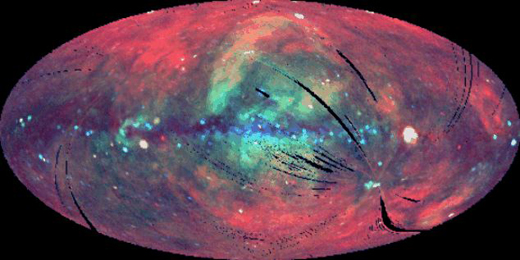Chandra's Digital Legacy
October is American Archives Month—a time to celebrate the importance of archives across the country. In honor of Archives Month, we're participating in a pan-Smithsonian blogathon. Throughout October we, and other blogs from across the Smithsonian, will be blogging about Chandra's rich archive of astronomical data, issues, and behind-the-scenes projects.
----------------------------------------------------------------------------------------------------------
Concluding our series of Archives Month blog posts, we thought we'd shift our focus towards the future of Chandra's digital legacy. Although the modern marvel of engineering that is the Chandra X-ray Observatory will not last forever, its lasting gift to humanity will be its archive of data. Long after the last bits of X-ray light have found their way to Chandra's detectors, scientists and curious amateurs will still be pouring over Chandra's archival data looking for their particular X-ray needle in the digital haystack.
This brings to mind the ROSAT (the ROentgen SATellite) X-ray observatory, a predecessor to Chandra, which, by the time this blog is posted, will have burned up somewhere in Earth's atmosphere. ROSAT played an important role in advancing X-ray astrophysics during its active years from 1991 to 1999, including providing us with the first all-sky X-ray map (see the image below), and discovering X-ray emissions from comets. Although ROSAT has been inactive for the past 12 years, its data archive is still a vital asset to X-ray astrophysics. Scientists are still using data from this telescope in their studies, providing a pre-Chandra perspective to analysis, and ROSAT data was used in a 2010 Chandra press release about the galaxy cluster Abell 3376. The importance of maintaining an easily accessible digital archive from these instruments cannot be overstated.

ROSAT All-Sky Image.
Credit: Max-Planck-Institut für extraterrestrische Physik (MPE)
The future of the Chandra data archive is looking very bright. Rather than letting it sit unused on disks, collecting digital dust, we are actively developing new tools to increase visibility and interactivity with Chandra and its data. The AVM project, mentioned in previous posts, is helping to drive a new archive of astronomical imagery dubbed AstroPix. From this website, curious users can leverage the power of AVM to execute extremely targeted searches for astronomical imagery (for example, show me all images of galaxies with a redshift of less than 0.1, which utilize data from Chandra, Hubble and Spitzer). Additionally, the website is envisioned to be a central repository for ALL astronomical imagery, both professional and amateur, empowering amateur astronomers to reach a broader audience with their own data archives.
Also currently in development, the Chandrascope project is being built as an interactive all-sky tour of public Chandra imagery. Similar to the Chandra Source Catalog Google Earth interface, Chandrascope will be more focused on Chandra outreach content and allow users to fly through the sky, discovering press release imagery and text along the way. For especially motivated users, Chandrascope can be a gateway to digging deeper into Chandra's high-energy view of our universe, as archival data will be only a few clicks away.
Immense collections of data are the hallmark of modern astronomy. Chandra's archive currently tips the scale at 8 terabytes. While this may sound like a lot of data, keep in mind that observatories currently in development like the Large Synoptic Survey Telescope are expected to generate this amount of data or more PER NIGHT and petabytes per year. Sharing this knowledge with as wide an audience as possible is critical to encouraging awareness and inspiring future generations of scientists. Building archives to house these collections, and intuitive tools to access and interact with the data will be the great challenge of this new era in astronomy. Chandra's digital legacy is currently in the vanguard of this new technological challenge.
-Joseph DePasquale, Science Imager, Chandra EPO

